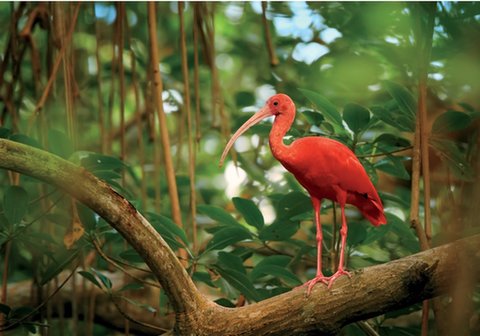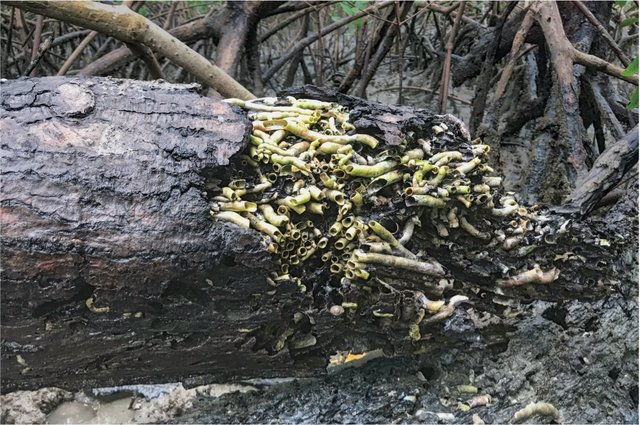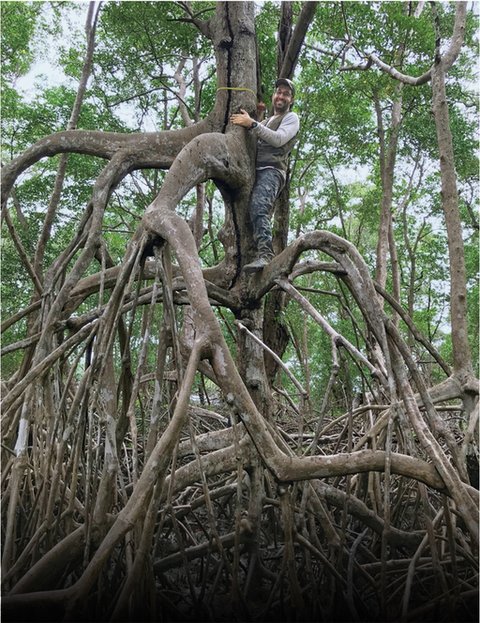North
America
South
America
Pacific
Ocean
Brazil
Iworkinaplacewherethelandandoceanmeet.Itisamangroveforest.Mangrovesareagroupoftreesthatrisefromatangleofrootsdeepinthe mud.
Thesewetlandsaretough.Theycanthriveinoceanwaterupto100timessaltierthanotherplantscanbear.And,theycanwithstand storms
WelcometoBrazil
OnthecoastofBrazilliethelongestcontinuousmangroveforests.Treesherearemorethan40meters(131 feet)high.TheycanstoretwiceasmuchcarboninthesoilasthenearbyAmazon rainforest.

Ascarletibisfindsahomeinthe mangrove.

Shipwormsnibbleawayatdead wood.
Mangrovesteemwithlife.Crabs,fishes,birds,insects,andcrocodilesfindfoodandhomeshere.Astrikingmangrovebirdisthescarlet ibis.
Shipwormskeepmangroveshealthybyeatingdeadwood.Crabs,fishes,birds,andinsectsfindfoodandhomeshere.Thistransfersnutrientsfromonelivingthingtoanother.Thewetlandsarecriticalforfisheriesandthetimber industry.
ThePowerofMangroves
Wecanseehowmangrovesprotectusfromnaturalhazards.Theyformalivingbarrierthatsheltersusfrom storms.
Mangrovesreducetheimpactofwavesandhighwinds.Theytrapcarbon,too.Thedenserootsofmangroveshelptobuildandbind.Theabovegroundrootsslowdownwaterflow.Thatreduces erosion.
Mangrovesareimportantplaces.Wemustlearntoprotecttheminreturnforthemprotecting us.

Iclimbedintotherootsofthistreetogetabetterlookatthewhole swamp.